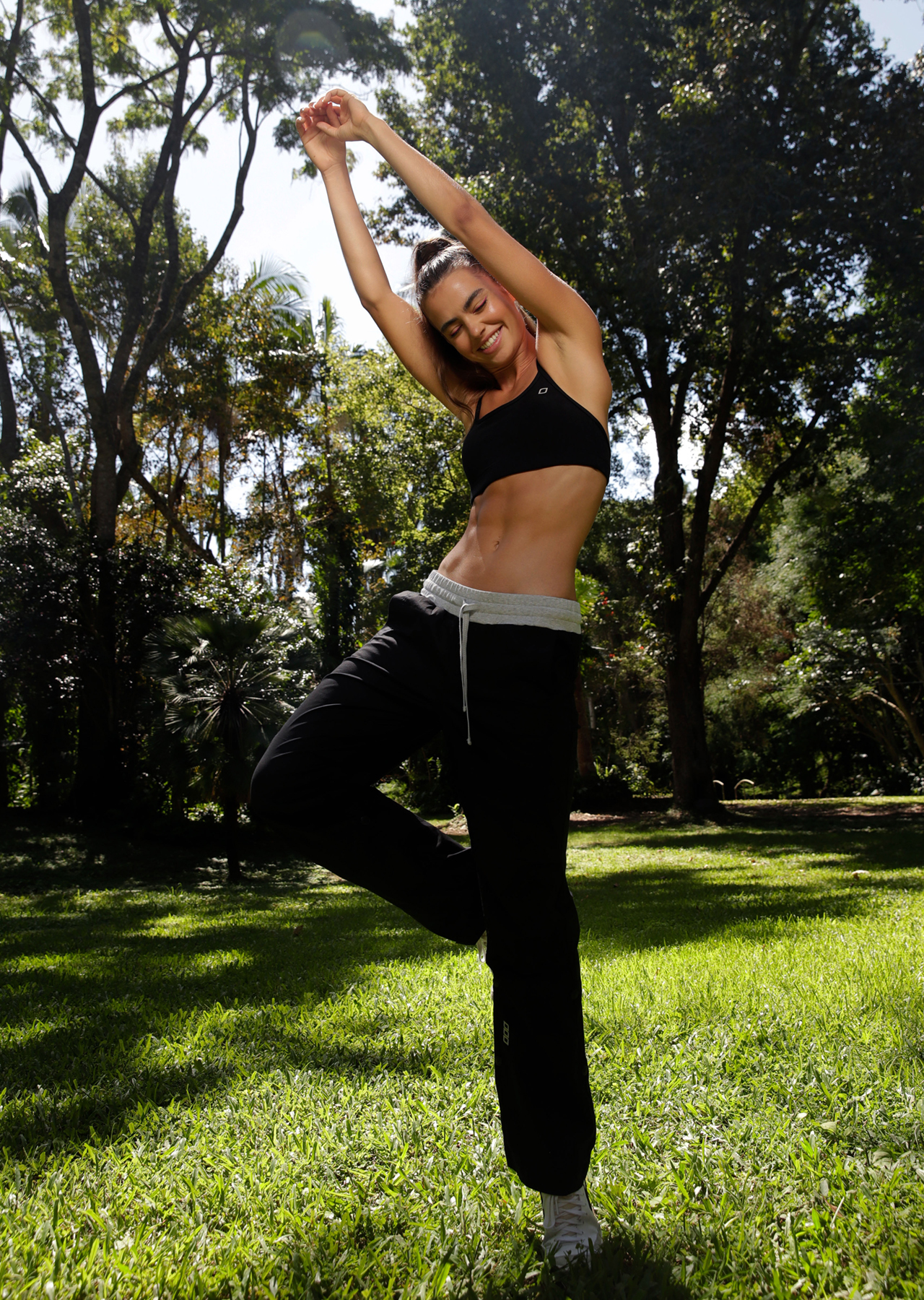The Mid-length Kensington Heritage Trench Coat in Midnight – Women | Burberry® Official
The archive-inspired style is woven in our signature cotton gabardine with a streamlined silhouette. Layer over knitwear and tailoring, and pop the collar to reveal a flash of Vintage check.
Our classic-fit trench updated with modern proportions. The archive-inspired style is woven in our signature cotton gabardine with a streamlined silhouette. Layer over knitwear and tailoring, and pop the collar to reveal a flash of Vintage check.
- Coat length: 94.5cm/37.2in. This is based on a size UK 6 as proportions change slightly according to size.
- Model’s height: 179cm/5ft 10.5in. Model wears size UK 6.
- Outer: 100% cotton
- Vintage check lining: 100% cotton
- Sleeve lining: 100% viscose
- Buttons: buffalo horn
- Buckles: calf leather
- Double-breasted closure
- Button-through welt pockets
- Signature details: epaulettes, hook-and-eye collar closure, gun flap, belted cuffs, D-ring belt, check undercollar, storm shield
- Specialist dry clean
- Made in England
- Alterations can be made using our in-store service. Please see FAQs for details.
- Item 40733711
Burberry Group plc is a British luxury fashion house established in 1856 by Thomas Burberry and headquartered in London, England. It designs and distributes ready to wear, including trench coats, leather accessories, and footwear. It is listed on the London Stock Exchange and is a constituent of the FTSE 250 Index.
A coat is typically an outer garment for the upper body, worn by any gender for warmth or fashion. Coats typically have long sleeves and are open down the front, and closing by means of buttons, zippers, hook-and-loop fasteners (AKA velcro), toggles, a belt, or a combination of some of these. Other possible features include collars, shoulder straps, and hoods.
Kensington is an area of London in the Royal Borough of Kensington and Chelsea, around 2.9 miles (4.6 km) west of Central London.
The district's commercial heart is Kensington High Street, running on an east–west axis. The north-east is taken up by Kensington Gardens, containing the Albert Memorial, the Serpentine Gallery and Speke's monument. South Kensington and Gloucester Road are home to Imperial College London, the Royal College of Music, the Royal Albert Hall, Natural History Museum, Victoria and Albert Museum, and Science Museum. The area is also home to many embassies and consulates.
Length is a measure of distance. In the International System of Quantities, length is a quantity with dimension distance. In most systems of measurement a base unit for length is chosen, from which all other units are derived. In the International System of Units (SI) system, the base unit for length is the metre.
Length is commonly understood to mean the most extended dimension of a fixed object. However, this is not always the case and may depend on the position the object is in.
Various terms for the length of a fixed object are used, and these include height, which is vertical length or vertical extent, width, breadth, and depth. Height is used when there is a base from which vertical measurements can be taken. Width and breadth usually refer to a shorter dimension than length. Depth is used for the measure of a third dimension.
Length is the measure of one spatial dimension, whereas area is a measure of two dimensions (length squared) and volume is a measure of three dimensions (length cubed).
Midnight is the transition time from one day to the next – the moment when the date changes, on the local official clock time for any particular jurisdiction. By clock time, midnight is the opposite of noon, differing from it by 12 hours.
Solar midnight is the time opposite to solar noon, when the Sun is closest to the nadir, and the night is equidistant from sunset and sunrise. Due to the advent of time zones, which regularize time across a range of meridians, and daylight saving time, solar midnight rarely coincides with 12 midnight on the clock. Solar midnight depends on longitude and time of the year rather than on time zone. In ancient Roman timekeeping, midnight was halfway between dusk and dawn (i.e., solar midnight), varying according to the seasons.
In some Slavic languages, "midnight" has an additional geographic association with "north" (as "noon" does with "south"). Modern Polish, Belarusian, Ukrainian, and Serbian languages preserve this association with their words for "midnight" or "half-night" (północ, поўнач, північ, поноћ) also meaning "north".
An official is someone who holds an office (function or mandate, regardless of whether it carries an actual working space with it) in an organization or government and participates in the exercise of authority (either their own or that of their superior or employer, public or legally private). An elected official is a person who is an official by virtue of an election. Officials may also be appointed ex officio (by virtue of another office, often in a specified capacity, such as presiding, advisory, secretary). Some official positions may be inherited. A person who currently holds an office is referred to as an incumbent. Something "official" refers to something endowed with governmental or other authoritative recognition or mandate, as in official language, official gazette, or official scorer.
The is a grammatical article in English, denoting nouns that are already or about to be mentioned, under discussion, implied or otherwise presumed familiar to listeners, readers, or speakers. It is the definite article in English. The is the most frequently used word in the English language; studies and analyses of texts have found it to account for seven percent of all printed English-language words. It is derived from gendered articles in Old English which combined in Middle English and now has a single form used with nouns of any gender. The word can be used with both singular and plural nouns, and with a noun that starts with any letter. This is different from many other languages, which have different forms of the definite article for different genders or numbers.
A trench is a type of excavation or depression in the ground that is generally deeper than it is wide (as opposed to a swale or a bar ditch), and narrow compared with its length (as opposed to a simple hole or pit).
In geology, trenches result from erosion by rivers or by geological movement of tectonic plates. In civil engineering, trenches are often created to install underground utilities such as gas, water, power and communication lines. In construction, trenches are dug for foundations of buildings, retaining walls and dams, and for cut-and-cover construction of tunnels. In archaeology, the "trench method" is used for searching and excavating ancient ruins or to dig into strata of sedimented material. In geotechnical engineering, trench investigations locate faults and investigate deep soil properties. In trench warfare, soldiers occupy trenches to protect them against weapons fire and artillery.
Trenches are dug using manual tools such as shovel and pickaxe or heavy equipment such as backhoe, trencher, and excavator.
For deep trenches, the instability of steep earthen walls requires engineering and safety techniques such as shoring. Trenches are usually considered temporary structures that are backfilled with soil after construction or abandoned after use. Some trenches are stabilized using durable materials such as concrete to create open passages such as canal and sunken roadways.









Reviews
There are no reviews yet.